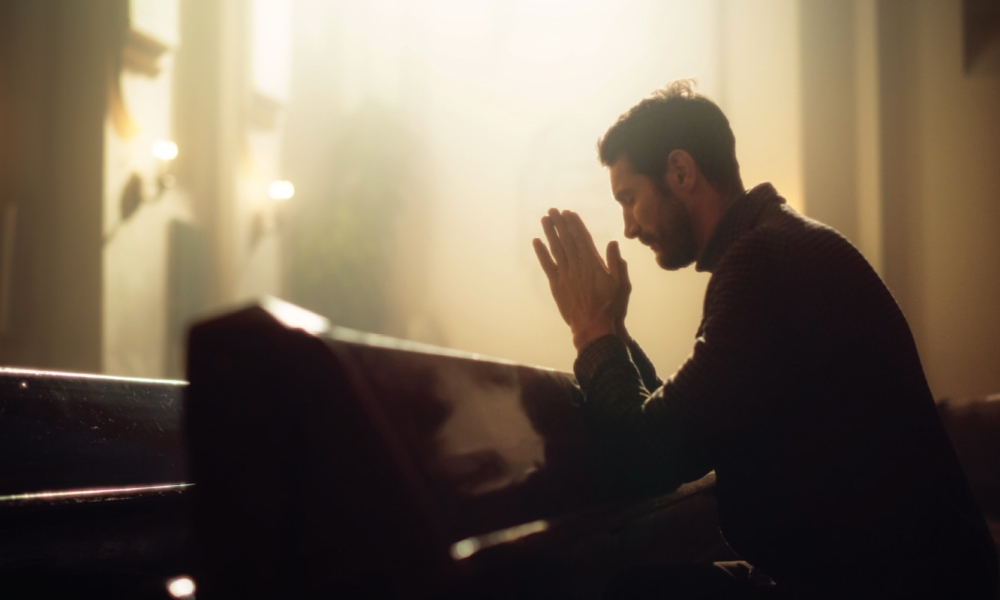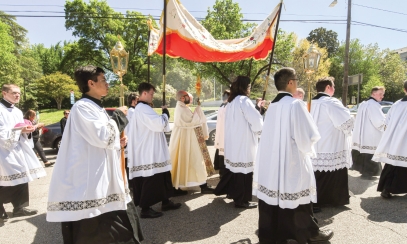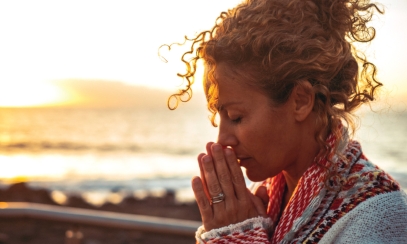
The Eucharist: A Foretaste of Heaven
The Mass is a “foretaste of heaven,” and many of us are well aware of this beautiful truth. In fact, it is one of the reasons that we rejoice in the gift of the Eucharist. However, it can often be met with incredulity. And even in our own minds, we can at times fail to see the connection and parallel of the liturgy on earth with the liturgy in heaven.
The Mass is a “foretaste of heaven,” and many of us are well aware of this beautiful truth. In fact, it is one of the reasons that we rejoice in the gift of the Eucharist. However, it can often be met with incredulity. And even in our own minds, we can at times fail to see the connection and parallel of the liturgy on earth with the liturgy in heaven.
We often see the things about the liturgy that are different and distinct from heaven, particularly the less than ideal flaws in how it is carried out, plus our flawed ability to attend to the truths in front of us. But the Eucharist trains us to recognize more than we can see with our eyes — as do all sacraments. This actually prepares us to look at the world differently, seeing Christ’s presence where others may not, and most importantly seeing the heavenly calling that is extended to all of humanity. We then see others as both created in God’s image and called to eternal communion with him.
In our own liturgical devotion, one way that we can be attentive to this fact is by “actively listening” to the words of the liturgy and attuning ourselves to the actions and gestures. We have already discussed full and active participation, and part of that is being actively receptive. For instance, the liturgy as we experience it reflects some of the glimpses of heaven we get in Scripture, and one of the clearest passages is Revelation chapter four. In this vision, we see a combination of a throne room and a place of worship. Gathered around the throne are 24 other thrones, likely symbolizing the 12 tribes of Israel and the Twelve Apostles, pointing to the Church founded on the Apostles. Here, we also see the four living creatures singing something that sounds very familiar to us — “Holy, holy, holy is the Lord God almighty” (Rev 4:8).
The Eucharist is not just an experience of Calvary as we have talked about the eucharistic liturgy as sacrificial. It is also an experience of the presence of the risen Lord. Christ is one and we encounter the whole Christ, in any aspect we can think of, in the Eucharist. Now that Christ is risen and has ascended into heaven with the humanity he shares with us, our deepest way of encountering him is in the Eucharist. As such, it gives us a concrete encounter with our hope — we, too, hope to live the resurrected life.
Worship is at the center of who and what we are as humans. We were made with the capacity and the need for worship. Think of the first creation account in Genesis where we see six days of creation followed by a sabbath day of rest. This is paralleled in the commandment to keep holy the sabbath in the 10 commandments. This is not accidental; the point of the sabbath in the 10 commandments and why we continue to worship on the day of resurrection, the Lord’s day, is to keep us focused on our destination. One of the reasons why we are called to worship liturgically is because we are meant to look at where we came from (creation) and to understand where we are going (salvation). The eucharistic liturgy, then, is the moment each week, or even daily, that orients our entire being.
The etymology of the word orient has deep significance. It literally means east and refers to the ancient practice of building churches to face the east toward the rising sun, symbolic of the risen Son. The liturgy arranges our entire lives to face the rising sun in the hope of our own resurrection. This encounter with the whole, complete, risen Christ gives us hope — not as some far-fetched thing but as something assured and tangibly promised.
The truth is that in the liturgy, heaven is within our reach. Something that may seem to us so distant is right in front of us. Receiving the Real Presence of Christ in communion leads us to participation in eternal communion that is the divine life of heaven.
Michael Martocchio, Ph.D., is the secretary of discipleship and the director of the Office of Catechesis and Christian Initiation. Email him at mmartocchio@charlestondiocese.org.



